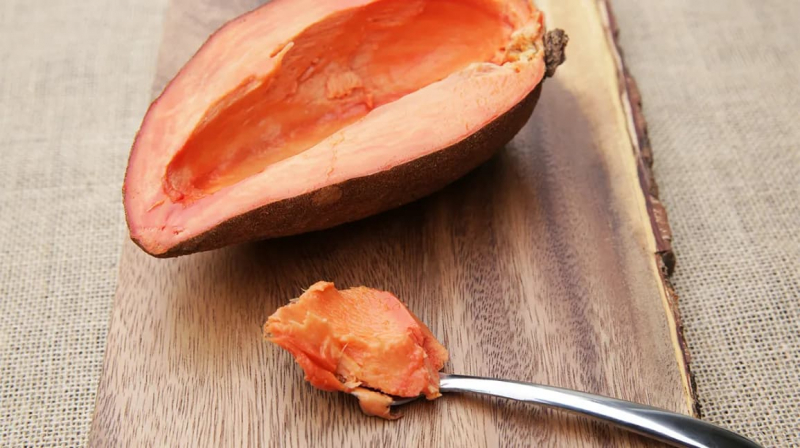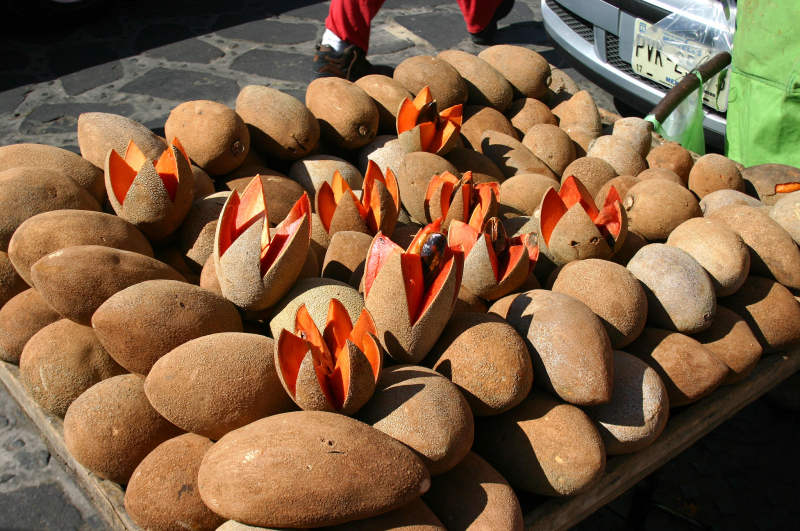Mamey

Mamey sapote, botanically classified as Pouteria sapota, is an ancient pre-Hispanic fruit belonging to the Sapotaceae family. Mamey is a national fruit of Cuba. Besides this name, it is also known as Sapote. This delicious fruit has its origin in Mexico and Central America. Furthermore, it is grown abundantly in the Caribbean and Latin America. Mamey sapote grows on slow-growing trees that can reach 15 to 45 meters in height. Once the trees have reached their fruit-bearing stage, Mamey sapote fruits can also take over two years to grow. The species does not grow true to seed, so the majority of the trees for commercial cultivation are developed from grafting for faster cultivation.
The mamey sapote is a medium to big fruit with a round, oval, or oblong shape with, occasionally, tapering, pointy ends. Its average length and diameter are 8 to 25 and 6 to 10 cm, respectively. The skin is grainy, scruffy, and somewhat rough, and ranges in color from light to dark brown. The flesh is soft, creamy, and dense behind the skin, varying in color from orange to red to salmon. It has a delicate, silky consistency and a slight squash-like odor. There are also one to four glossy, black-brown, elliptical seeds in the center of the meat. The seeds can be extensively processed to remove the poisons and make them safe for use in cooking even if they are hazardous and inedible when eaten raw. Mamey sapote is only edible when fully ripe and gives slightly pressure when squeezed. The flesh bears a complex sweet and savory flavor, containing subtle notes of vanilla, nutmeg, apricots, and root beer mixed with honeyed pumpkin, squash, and sweet potato nuances.











